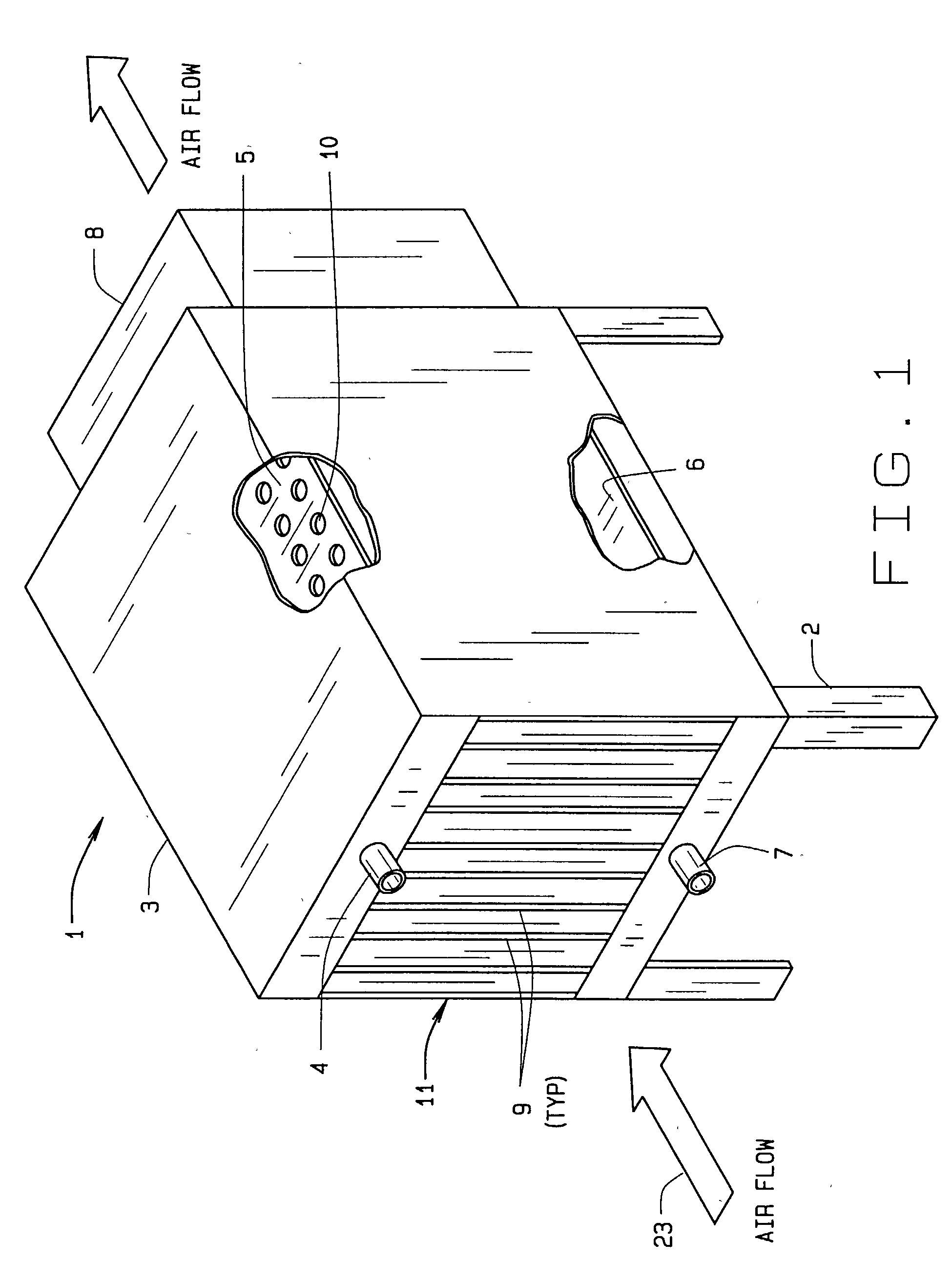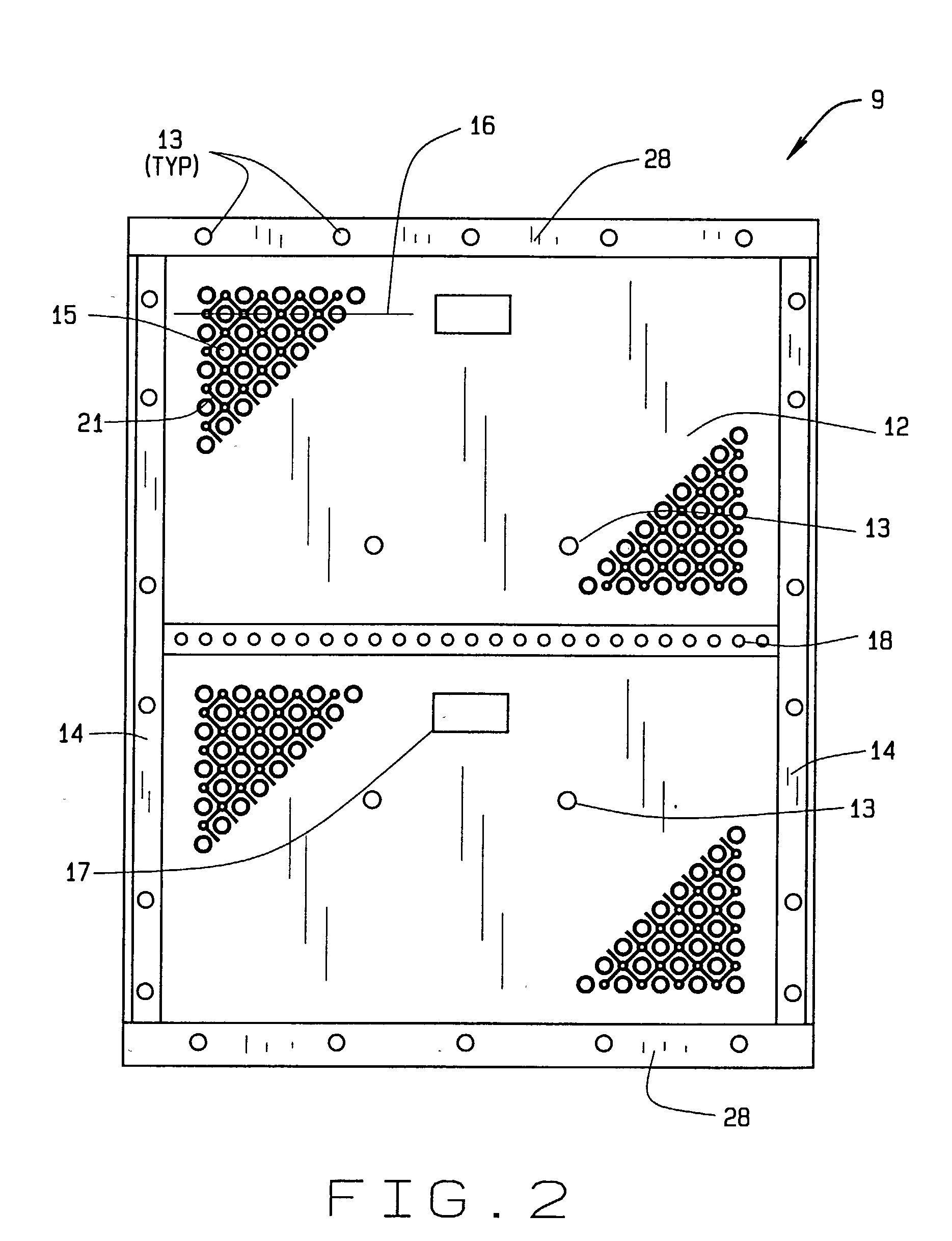Heat transfer core for water cooling tower
- Summary
- Abstract
- Description
- Claims
- Application Information
AI Technical Summary
Benefits of technology
Problems solved by technology
Method used
Image
Examples
Embodiment Construction
[0031] Referring to the drawings, FIG. 1 shows a cooling tower 1 which receives heated water from an industrial, an air conditioning, or a refrigeration application so as to cool the water. The cooling tower cools the heated water by means of exposing the heated water to air drawn or forced through the cooling tower and then returning the cooled water to the industrial, air conditioning, or refrigeration application. The cooling tower 1 has a frame 2, a cabinet 3, a heated water inlet 4, an upper heated water reservoir 5, a lower cooled water reservoir 6, a cooled water outlet 7, and a blower 8. The frame 2 has legs or channels that attach the cooling tower 1 to a foundation, typically a roof. The legs, in the alternative, could be in the form of a bent sheet or removed completely. In this invention, a cooling tower 1 has a film fill pack 11 of the present invention disposed within a cabinet 3 between the reservoirs 5 and 6 for directing a flow of heated water from the upper heated ...
PUM
| Property | Measurement | Unit |
|---|---|---|
| Thickness | aaaaa | aaaaa |
| Thickness | aaaaa | aaaaa |
| Thickness | aaaaa | aaaaa |
Abstract
Description
Claims
Application Information
 Login to View More
Login to View More - R&D
- Intellectual Property
- Life Sciences
- Materials
- Tech Scout
- Unparalleled Data Quality
- Higher Quality Content
- 60% Fewer Hallucinations
Browse by: Latest US Patents, China's latest patents, Technical Efficacy Thesaurus, Application Domain, Technology Topic, Popular Technical Reports.
© 2025 PatSnap. All rights reserved.Legal|Privacy policy|Modern Slavery Act Transparency Statement|Sitemap|About US| Contact US: help@patsnap.com



